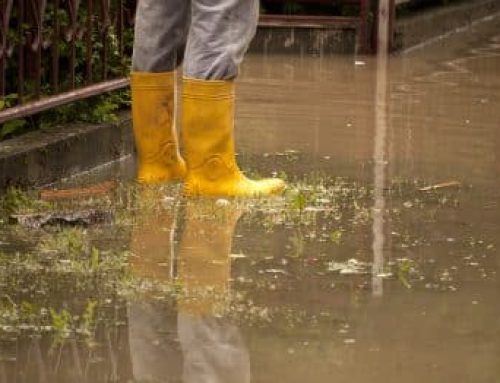Some assume coverage for garages, fences, and other outdoor structures is automatically included in their insurance policy as these items are located on the same land as the main house. Coverage for “Other Structures” is usually always included in standard Homeowner’s policies (whether you need it or not). However, coverage for investment properties operates differently, and some “detached structures” or “outdoor fixtures” may not be included unless coverage is specifically requested for those items. In other cases, coverage may simply not be available for them at all.
Welcome to our “Is It Covered?” series. For a fuller introduction of the series, read HERE. We hope these quick reads will help you increase your understanding of your insurance coverage, clear up confusion and help you avoid preventable losses! Please bear in mind that insurance policies may vary, so always check your own policy for language specific to your covered property. If you have coverage questions, don’t hesitate to call your agent who will be happy to assist you!
What Types of Damage Could Be Excluded?
Coverage on a garage is usually included with the coverage for the main structure if it is attached. The word “attached” may have different meanings depending upon the policy, so read carefully. Some policies may include coverage for a garage attached to the main structure by a breezeway, while others may still define that garage as “detached.” Detached garages, on the other hand, usually fall under the category of Other Structures. If your Declarations page or Evidence of Insurance does not list a limit for Other Structures, your detached garage is likely NOT covered.
Aside from garages, fences and other “outdoor fixtures” such as outdoor furniture are typically not covered. However, some commercial policies do allow coverage for outdoor furniture if it is used to maintain or service the building. Some Builders Risk policies do offer coverage for materials, equipment, supplies, and “temporary structures” on or within 100 feet of the premises during construction. It is best to check your policy language to see what specific coverage is offered or excluded for your property.
What Happens if I Don’t Have Coverage for Other Structures Included in My Policy?
If you don’t have Other Structures coverage and your detached garage is damaged by a fire, for example, the insurance company will not pay to repair or rebuild it. As mentioned previously, one should not assume that Other Structures’ coverage is automatically included. Look for a line item on your Declarations page or Evidence of Insurance labeled “Other Structures.” It may simply say “included,” “excluded,” or may give a specific coverage amount. Some properties have very nice “mother-in-law suites” on the top floor of a detached garage, so if you have a significant secondary structure on your property, be sure to ask your agent how to adequately protect it.
Can I be Held Responsible if My Tree Damages a Tenant’s Belongings Being Stored Outdoors?
The short answer is it depends on the circumstances of the loss. If your tree falls on the tenant’s lawn mower and the incident is determined to be an “act of God,” that tenant will then need to rely on their renter’s insurance to reimburse the loss of the mower. The key to the definition of an “act of God” is that it’s an “injury due directly and exclusively to natural causes which could not have been prevented by the exercise of reasonable care and foresight.”
However, if the tenant had sent the property owner a written notice warning of the condition of the tree in the backyard, but the owner did not attempt to remedy the hazard, they may be responsible to replace their damaged mower. Your liability coverage may kick in to cover the damage, but bear in mind that a deductible still may be applied, leaving you to pay for that mower out of your own pocket. Replacing a mower is one thing, but if that same tree were to injure your tenant as they were mowing the backyard, it may be much more costly to you and them, financially, physically, and psychologically.
How do I Add Other Structures Coverage?
If coverage for Other Structures isn’t already included in your policy, you can typically add a separate amount of coverage for those items, such as a detached garage. Whether or not coverage for fences and other outdoor property can be added may depend upon the type of building you’re insuring and what policy format is being used to insure the property. If you are able to add Other Structures coverage, it typically does cost extra and will depend upon how much coverage is being requested. For example, adding $10,000 worth of coverage will not cause a significant increase in cost; however, insuring another structure that is equivalent in function to the primary building could double your cost.
What Does the Technical Lingo for This Exclusion Look Like in My Policy?
Sample policy language may look similar to this:
Other Structures Coverage as Listed on a Declarations Page
A. DWELLING $100,000
OTHER STRUCTURES $10,000 (or EXCLUDED)
B. PERSONAL PROPERTY EXCLUDED
C. LOSS OF USE ACTUAL LOSS SUSTAINED
Language Excluding Fences and Other Outdoor Property
“Covered Property does not include the following property while outside of buildings:
Fences, radio or television antennas (including satellite dishes) and their lead-in wiring, masts or towers, signs (other than signs attached to buildings), trees, shrubs, or plants (other than “stock” of trees, shrubs or plants), all except as provided in the Coverage Extensions.”
Outdoor Fixtures and Furniture Exclusion Endorsement
“This Policy does not insure any loss or damage, cost or expense or any increase in insured loss, damage, cost or expense which arises from loss or damage to outdoor furniture or fixtures, whether or not directly or indirectly caused by or resulting from any peril otherwise insured under this Policy.”
If Coverage for “Outdoor Fixtures” or “Uninstalled Materials” is Included in a Commercial Policy
“Covered Property
Building, meaning the building or structure described in the Declarations including:
(1) Completed additions;
(2) Fixtures, including outdoor fixtures;
(3) Permanently installed:
(a) Machinery and
(b) Equipment
(4) Personal property owned by you that is used to maintain or service the building or structure or its premises, including:
(a) Fire extinguishing equipment;
(b) Outdoor furniture;
(c) Floor coverings; and
(d) Appliances used for refrigerating, ventilating, cooking, dish washing or laundering;
(5) If not covered by other insurance:
(a) Additions under construction, alterations and repairs to the building or structure;
(b) Materials, equipment, supplies and temporary structures, on or within 100 feet of the described premises…”
As insurance policies may vary, please check your own policy for language specific to your covered property.
How Much Can Other Structure Damage Cost?
Damage to small items, such as the lawn mower mentioned above may only cost you a couple of hundred dollars. That stated if a detached garage goes uninsured your out-of-pocket cost could start at anywhere around $5000 and go up from there, depending upon the complexity of the structure.
One of the most painful instances we witnessed was where a secondary living structure on the same plot was assumed to be insured. When it burned to the ground in an electrical fire the investor ended up having to foot the entire ~$70,000 bill to tear it down and rebuild. The real kicker is the investor could have added coverage for the building under Other Structures and his out-of-pocket expense may have been reserved to the deductible.
What Can I Do to Protect Myself?
First, know what is in your policy: Read the sections of your insurance policy that addresses Other Structures, fences, and other “outdoor fixtures.” It is important to know both what you are and are not covered for. Make your agent aware of any additional structures located on the property so they can be covered in the appropriate manner. If you don’t understand your coverage or have questions, don’t hesitate to ask your agent who should be happy to help you!
Maintain your lawn and trees so they are less likely to damage other property stored outdoors: Sometimes there’s nothing that you can do to prevent a healthy tree from falling as a result of high winds during a storm. However, making sure your trees stay healthy can keep you from the unnecessary risks of damaging your garage, someone else’s property, or even keep someone from being injured!
Hire a licensed and insured arborist to correct any large tree issues: Be sure any arborist you hire has been certified by an organization such as the International Society of Arboriculture or the Tree Care Industry Association. They will also need to have the appropriate liability insurance. To find an arborist in your area, call TCIA at 800-733-2622 or run a Zip Code Search on www.treecaretips.org. ISA-certified arborists can be found through a search tool at www.isa-arbor.com.
Make sure your tenant understands their personal property isn’t covered by your insurance: Require your tenants to carry renter’s insurance in the lease and enforce it. Let them know any insurance you carry on the property as the owner does not apply to their personal belongings. Impress upon them the importance of reporting any hazardous conditions on the property to you or your property manager immediately. You may want to include a section in your lease where the tenant acknowledges their understanding of these items.






